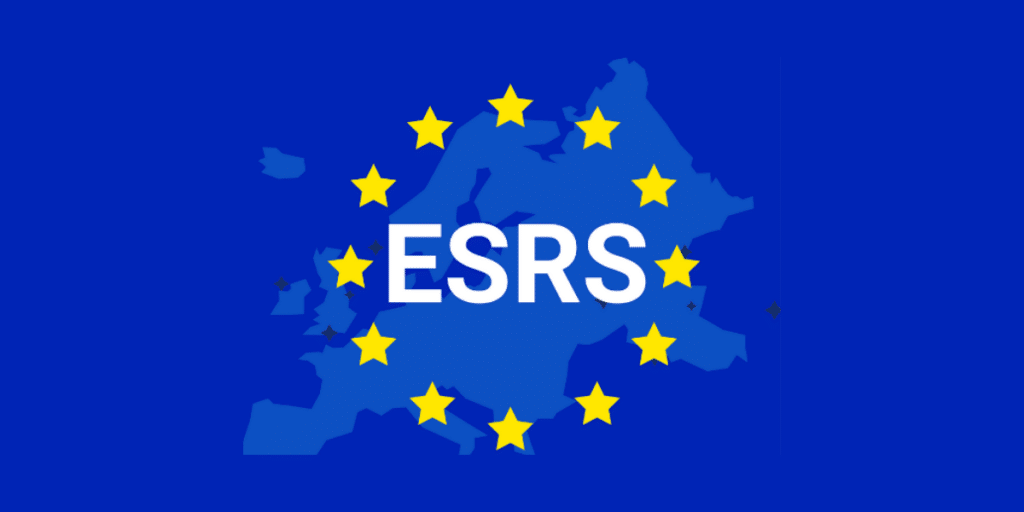As of January 1st, 2024, the CSRD (Corporate Sustainability Reporting Directive) has been enforced. This European directive mandates that large corporations submit a report on sustainable development, which must adhere to the standardized European norms, specifically the ESRS (European Sustainability Reporting Standards). But what exactly are these standards? DataScientest offers clarity.
ESRS, standards adopted as part of the CSRD
ESRS and CSRD
On July 31, 2023, the European Commission ratified the ESRS framework. This collection of European standards was crafted by the EFRAG, (European Financial Reporting Advisory Group), an autonomous entity comprising various stakeholders.
The standard is essential under the CSRD framework. And rightfully so, as the directive obliges large corporations to furnish a report on non-financial matters. But what non-financial information is required? The European Sustainability Reporting Standards address this query by defining criteria pertaining to environmental, social, and governance (ESG) concerns.
The ESRS aims to accomplish two goals: to signify a new phase in the shift towards a sustainable European economy, while also boosting transparency.
- Transparency: the data in the non-financial report enables investors to comprehend the impact of the corporations in which they invest their funds. The same goes for consumers who are increasingly mindful of environmental issues. They opt to purchase from engaged companies (without resorting to greenwashing).
- Sustainable development: by relying on objective criteria, corporations can steer their strategies regarding environmental impact, governance, and societal consequences. Given that their actions influence their reputation, it’s in their best interest to act in an environmentally responsible manner.
Useful to know: The ESRS is a standard designed to homogenize sustainability criteria across Europe. As such, it considers other international benchmarks, like the International Sustainability Standards Board (ISSB) and the Global Reporting Initiative (GRI).

What Is Double Materiality?
The ESRS framework incorporates the principle of double materiality, implying that financial matters are indistinguishable from ESG issues.
Each decision by an organization must be viewed in light of its environmental, societal, and governance impact, and vice versa.
A sustainability issue is reportable only if it bears a financial consequence. Therefore, companies must determine what they consider appropriate to disclose or omit following a double materiality assessment.
Nevertheless, within the “Climate Change” category, the company is obliged to provide this information. Failing to do so necessitates justification. This is particularly challenging as it’s hard to argue that its operations do not contribute to greenhouse gas emissions. Currently, the majority of human activities generate pollution. The focal point is essentially to show how the company is mitigating its environmental impact.
The Pillars of ESRS Standards
The ESRS structure is founded on 3 primary categories of standards:
- The cross-cutting standards: These must be included in the non-financial report.
- The thematic standards: These cover environmental, social, and governance aspects.
- The sector-specific standards: These are yet to be delineated by EFRAG (European Financial Reporting Advisory Group) and are anticipated to be unveiled by 2025.
What Are Cross-Cutting Criteria?
These indicators furnish a snapshot of the company’s overall sustainable development performance.
These are categorized into 2 subgroups:
- ESRS 1 – General Requirement: This consolidates the ESRS standards framework, editorial conventions, fundamental principles, and requirements for preparing the data.
- ESRS 2 – General Information: This concerns publication requirements.
For instance, a company can outline its strategic outlook on sustainable development and the specific targets established to enhance its ESG outcomes.

What Are the Environmental Criteria?
The European Sustainability Reporting Standards delineate 5 criteria:
- ESRS E1 – Climate Change: This pertains to illustrating the company’s greenhouse gas emissions, its strategies for reduction, and adaptation to climate change.
- ESRS E2 – Pollution: The company is required to describe its impact on air, water, and soil pollution, including the policies devised to manage them.
- ESRS E3 – Marine and Hydric Resources: Again, the company must elucidate its impact and its strategies to mitigate negative effects on marine and hydric resources, including strategies such as reducing water consumption.
- ESRS E4 – Biodiversity and Ecosystems: It needs to demonstrate how it either contributes to the deterioration or improvement of biodiversity.
- ESRS E5 – Use of Resources and Circular Economy: The company is expected to show how it manages natural resources, whether through efficient and sustainable use, avoidance of depletion, or adopting eco-responsible sourcing policies, etc.
What Are the Social Criteria?
These mainly deal with interactions with employees and are divided into 4 subcategories:
- ESRS S1 – Workforce in the Company: such as gender equality, inclusion of disabled workers, job security, fair wages, social dialogue, freedom of association, etc.
- ESRS S2 – Workers in the Supply Chain: This involves how the company impacts its workers, for instance, through work/life balance, health, and safety measures, etc.
- ESRS S3 – Affected Communities: This addresses the impact of the company’s operations on certain community groups, particularly indigenous peoples.
- ESRS S4 – Consumers and End Users: such as the protection of privacy and the use of personal data.
What About Governance?
It solely involves the ESRS G1 (Business Conduct) criterion. This encompasses internal control mechanisms, transparency, and the ethics of corporate practices (including anti-corruption measures).
In this context, the company must disclose information about the composition of its board of directors, the roles and responsibilities of its directors, and the policies implemented to ensure greater transparency and integrity, among other things.
Data Collection at the Core of ESRS

Companies are increasingly required to be transparent with their investors and consumers. However, to fulfill these obligations, they must supply them with up-to-date and pertinent data.
Between environmental, societal, and governance aspects, myriad data points must be gathered. They need collaborators skilled in processing all this information to craft their non-financial report.
Are you keen on supporting companies in this endeavor? Embark on a journey of data processing and analysis training with DataScientest.










